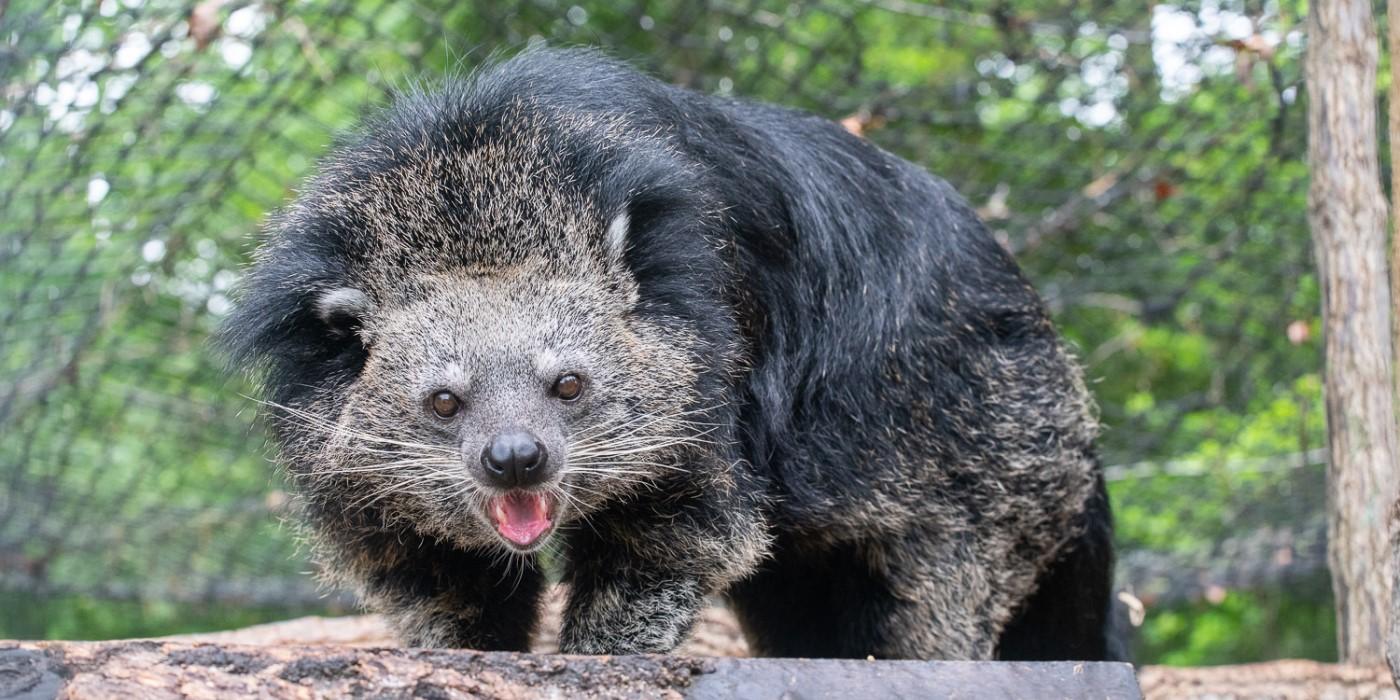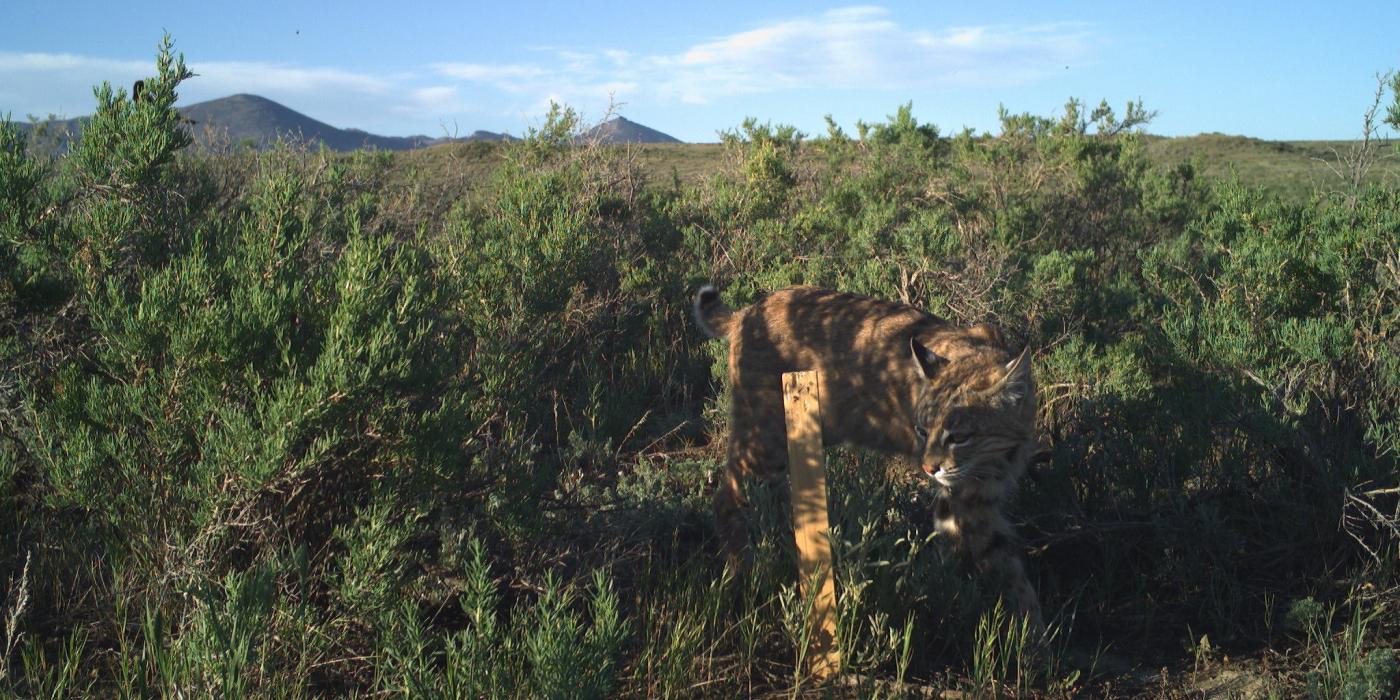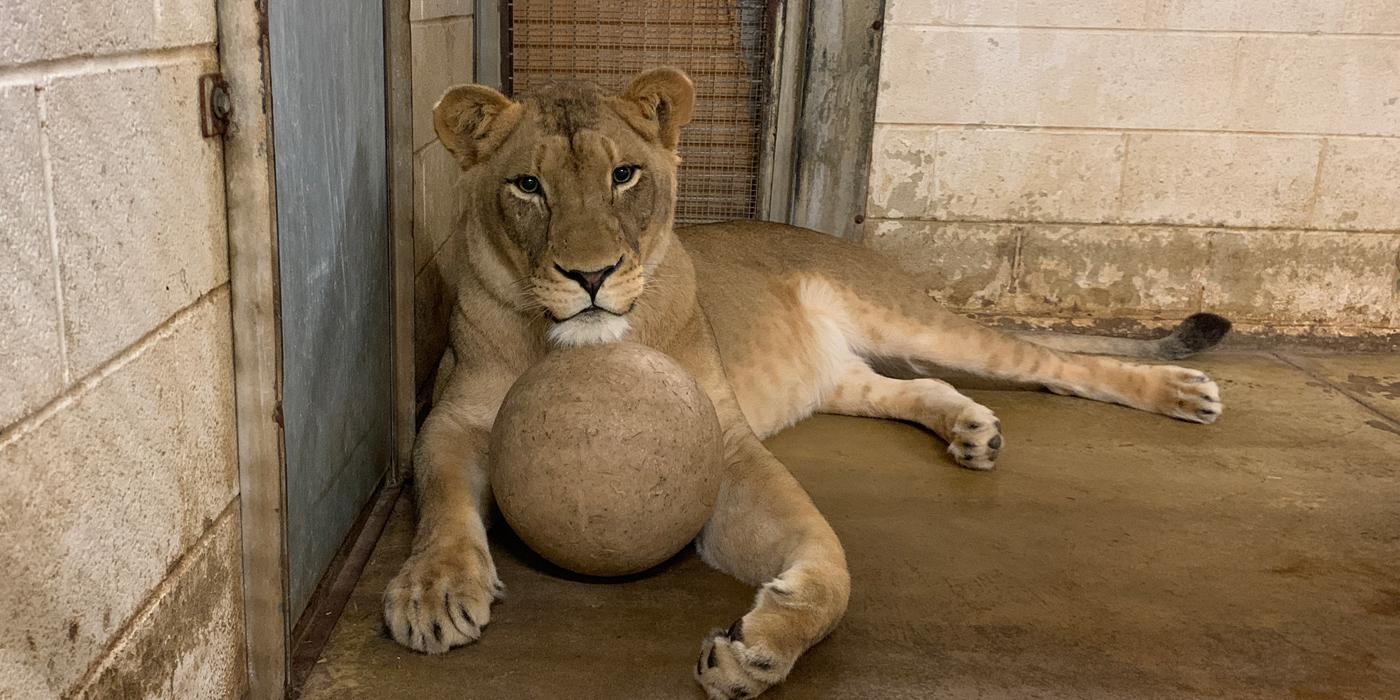How to Care for Bobcats
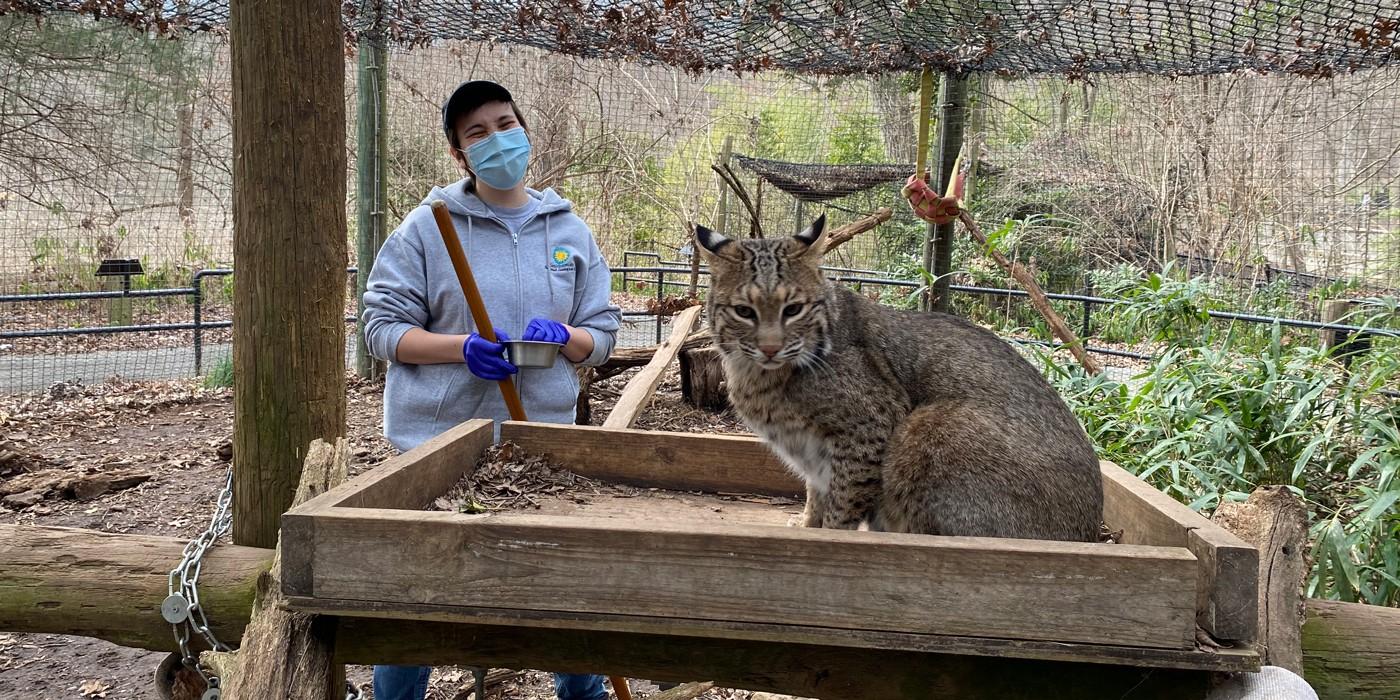
Bobcats get their name from their short, bobbed tails. Get the extended ‘tail’ of Smithsonian’s National Zoo’s three bobcats straight from an animal care expert! Animal keeper Charlie Shaw works with a large variety of animals including fishing cats, goats, chickens, lions, tigers and bobcats.
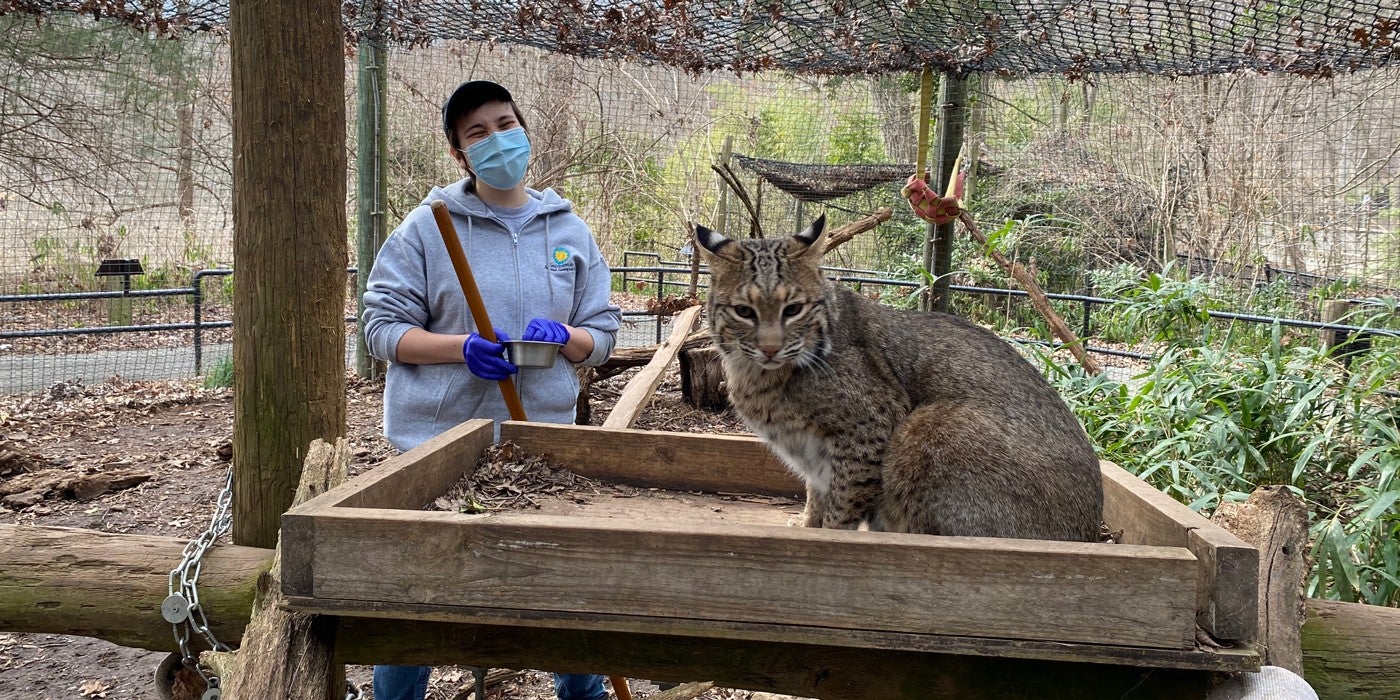
Ever since I was young, I’ve liked cats. I’m privileged today to work with lions, Sumatran and Amur tigers, fishing cats and bobcats. It’s cool to see the similarities and differences between them! For example, when I give my domestic cats a box, they will rub against it and possibly get in. I’ve seen the Zoo’s bobcats do the same. Even our tigers will rub in or against an enrichment item they like to mark it with their scent.
It is special to work with a cat native to the United States. While the International Union for Conservation of Nature considers bobcats a species of “least concern,” their native habitat is shrinking due to urbanization. Many of the bobcats that currently live in North American zoos were rescued due to injury, contracting a disease, having a birth defect or were orphaned as a very young kitten.
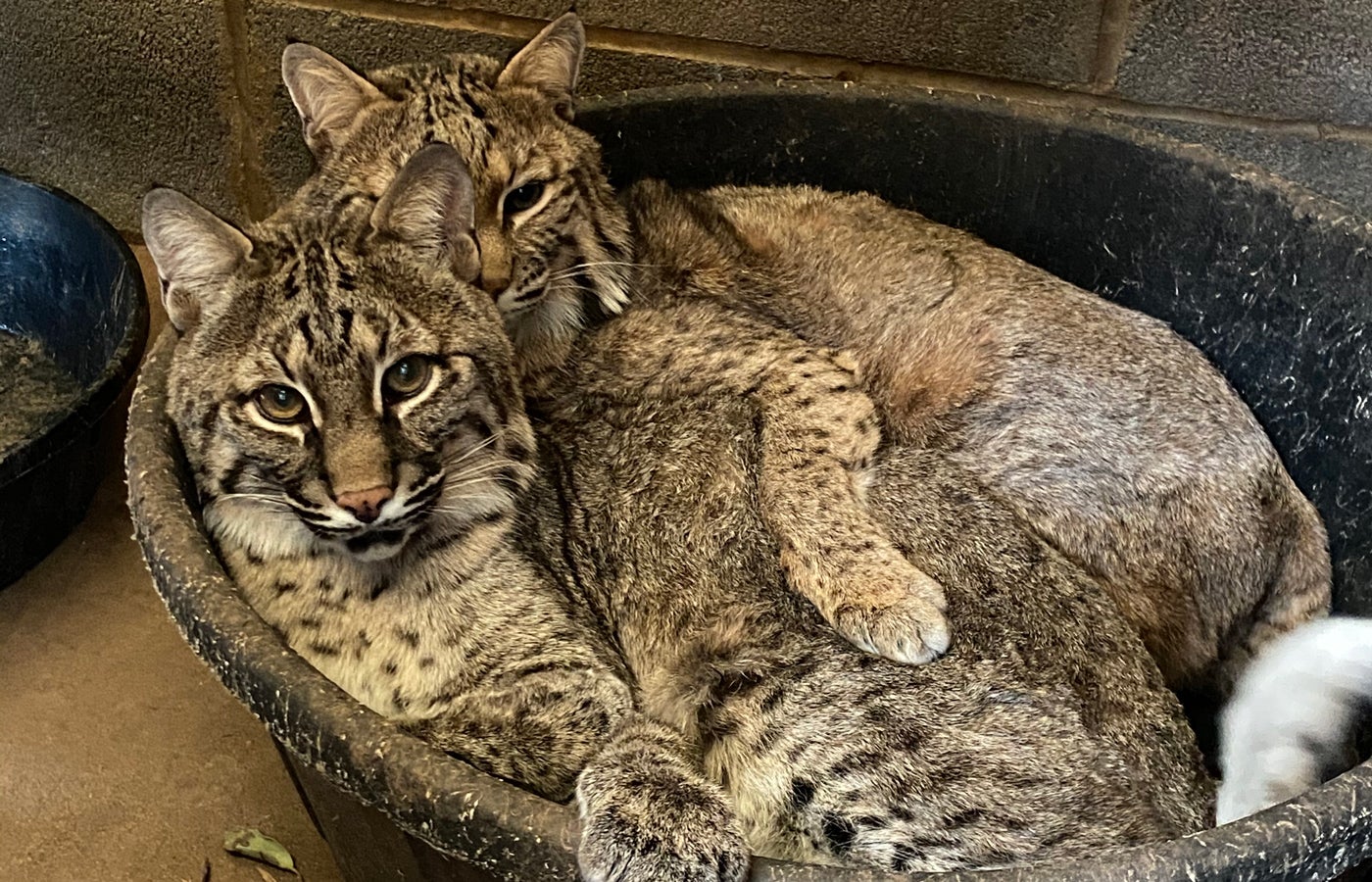
In the wild, bobcats are solitary. However, rescued bobcats and kittens tend to be more tolerant of each other’s company. All three of the Zoo’s bobcats—males Cheese and Yoda and female Ollie—are rescues. Although we do not plan to breed our bobcats, they are important ambassadors for their species and provide visitors with a tangible connection to the wildlife in their own backyard.
Our 10-year-old male bobcat, Cheese, is also the tallest among the three. He is shy and prefers to hide in the dens around their shared habitat. Yoda, our 9-year-old male, is much more outgoing and is the most vocal. He will meow, growl, snarl and hiss, which are all very common vocalizations for bobcats. Yoda knows what he wants and when he wants it; there isn’t exactly a hierarchy among our bobcats, but if food is involved Yoda will assert himself and insist on eating first.
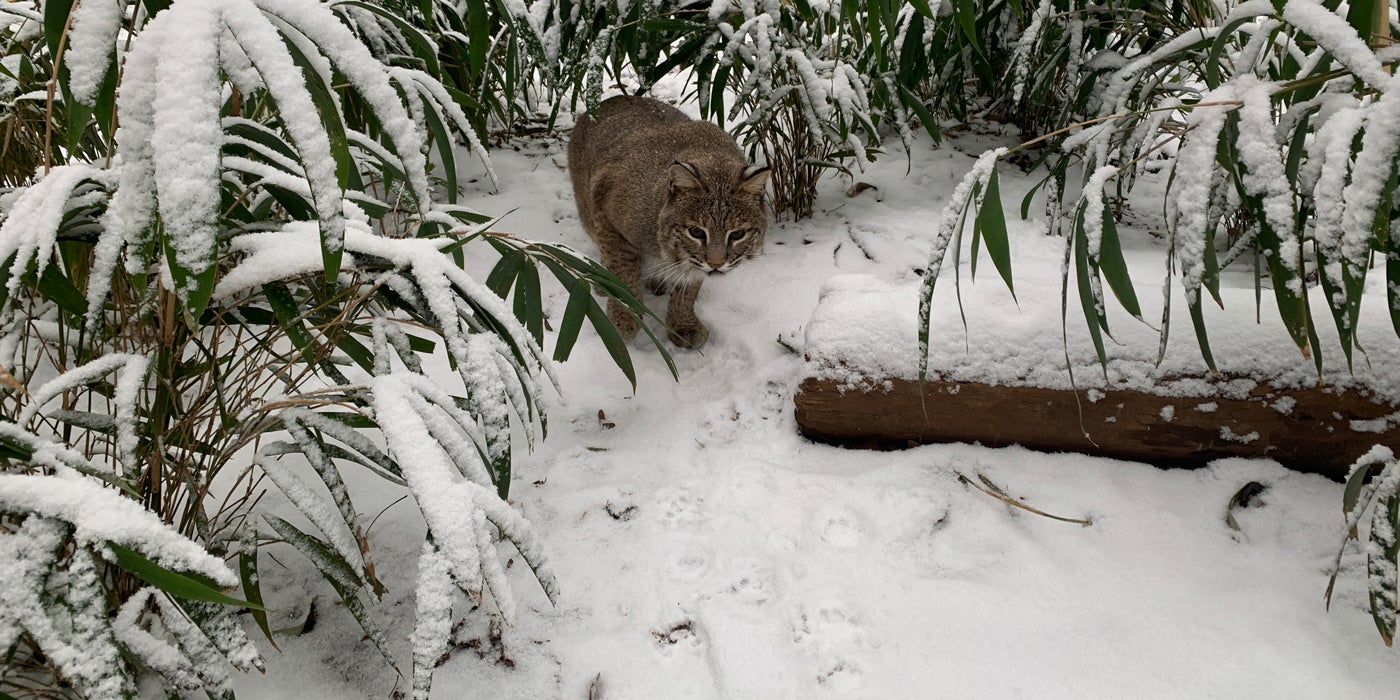
Ollie, our 10-year-old female, likes her space and will “hide” herself in the grass to observe what’s going on around her. Her lighter, sandy colored fur doesn’t help her blend into the grass very well, but she seems to think she is well hidden.
Bobcats are easy to train since they are very food-motivated. Our cats receive a specialized, meat-based carnivore food that is fortified with the nutrients they need and would normally get from prey in the wild. They also get beef knuckles—a bone with meat and tendons to chew on—twice a week, and a whole prey item (such as frozen-thawed guinea pigs) once a week. Mice are a favorite treat among all the cats. When we toss them into the habitat, Ollie is a pro at jumping up and catching them mid-air!
Carcass feedings like these encourage the cats to use their natural hunting behaviors. They also play an important role in maintaining the cats’ overall health. Consuming whole prey items helps strengthen their jaw muscles, and the skin, fur and bones are full of fiber, which aid in the digestive process.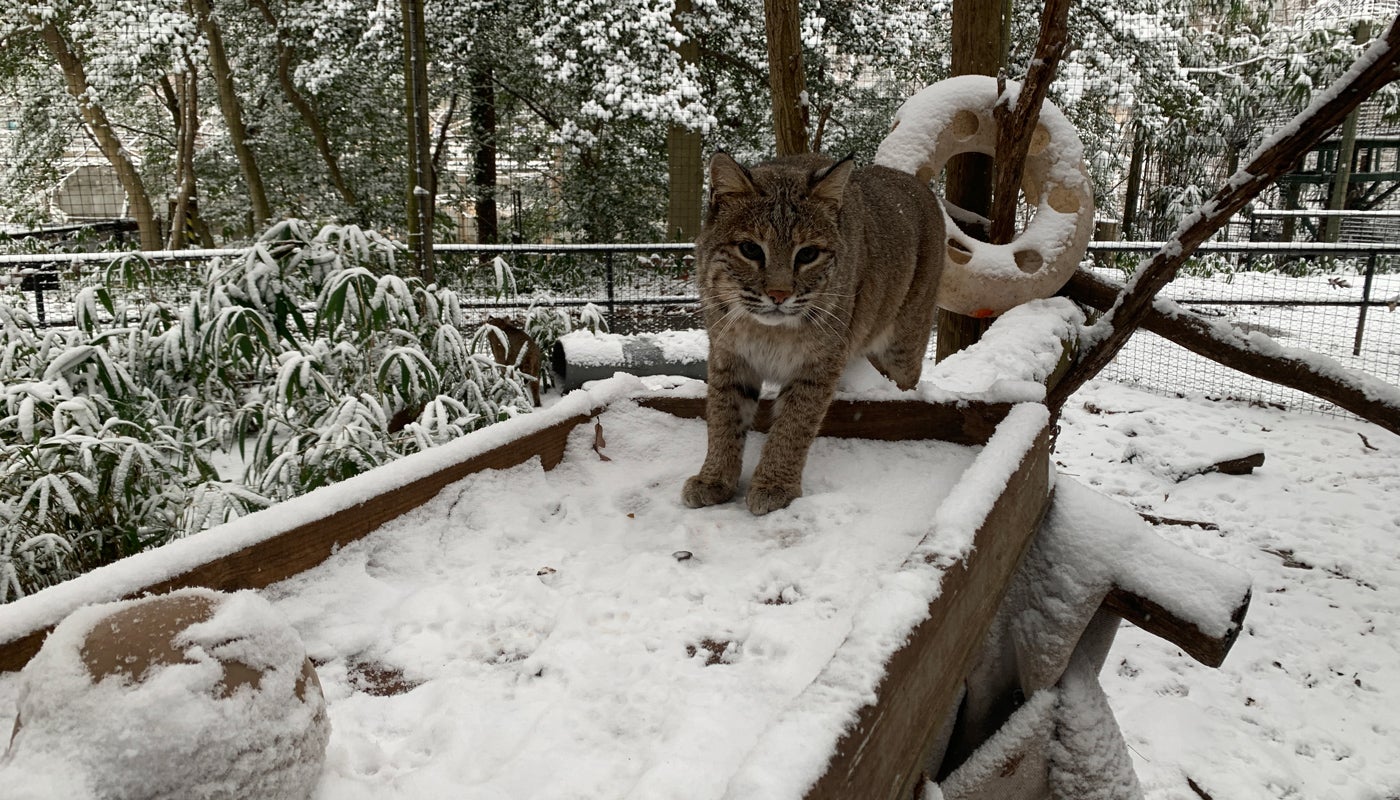
Bobcats’ native habitat ranges from southern Canada to northern Mexico, and they are very adaptable to a variety of climates. While you’re not likely to see one in a city like Washington D.C., the four-season climate here is similar to what bobcats experience in the wild.
Ollie, Cheese and Yoda currently live behind-the-scenes in an outdoor habitat that provides the cats with 360-degree views. We encourage them to explore their habitat by adding elements to their environment that help elicit natural behaviors, like hiding and climbing.
We offer them a lot of different spaces to hide including dens, tubes and a faux rock. During the winter, our bobcats seem to prefer to spend time in their heated dens. When the temperature drops in winter, they will snuggle together in their den. Cheese and Yoda are strongly bonded, so it isn’t unusual to see them cuddling together, no matter the temperature. Bobcats are also proficient climbers, so their exhibit space includes large branches, platforms and hammocks.
When we initially hung up the bobcats’ hammocks, they were curious but hesitant to try them out. A few keepers tossed frozen-thawed mice into one of them to show the cats the hammocks were a safe place to go. In response, the bobcats climbed up and retrieved the mice, then jumped back down.
Eventually, all but one keeper left. Almost immediately, all three bobcats tried to sit in the hammock! The hammock is only big enough for one cat, but that didn’t stop them from trying.
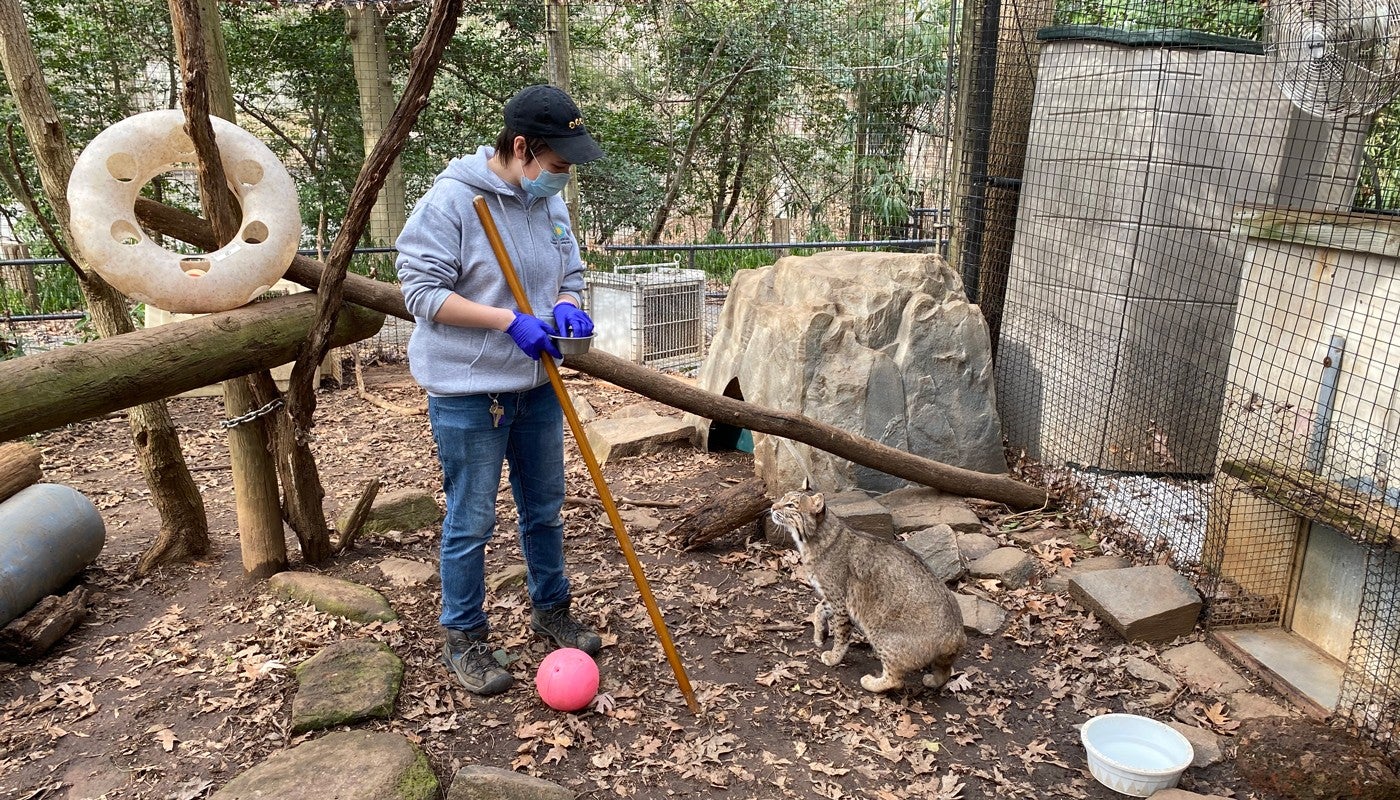
Having worked with both large and small cats, I have learned the key to caring for bobcats is to be patient and alert. Smaller cats tend to be timid and nervous because they encounter large predators in the wild and are instinctually wary. It may take them longer to trust and be comfortable around their keepers, but when they do they are eager to interact and their personalities shine.
If you want to help protect wild animals like bobcats, one of the easiest things we can all do is help keep our environment clean. Reduce the amount of waste you produce, reuse and repurpose items that may otherwise be designated as “single use” and pick up any litter you find. You can also help spread the word about bobcats and inspire others to care about them, too!
Bobbing with excitement about bobcats? Check them out on Claws & Paws Pathway when you plan your visit today!
Pounce on a variety of stories from animal care experts all over Smithsonian’s National Zoo and Conservation Biology Institute here.
Related Species:

